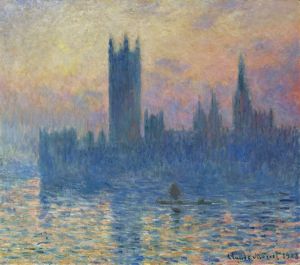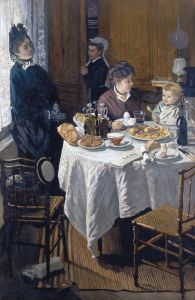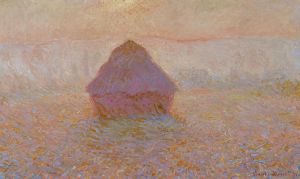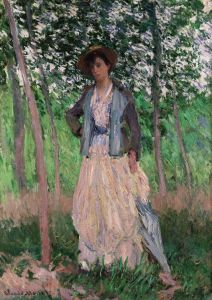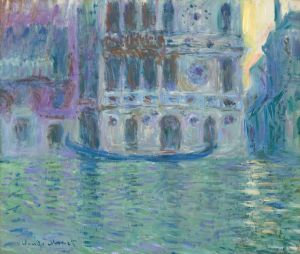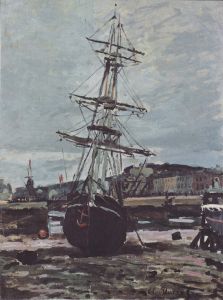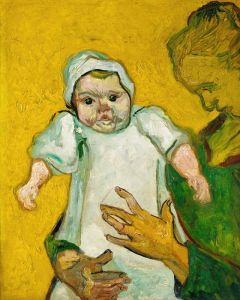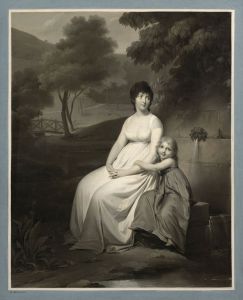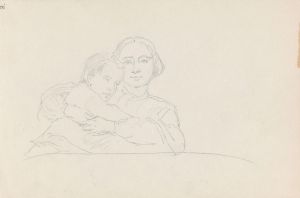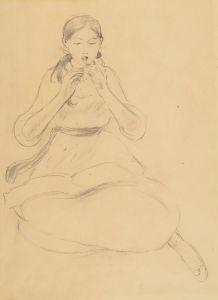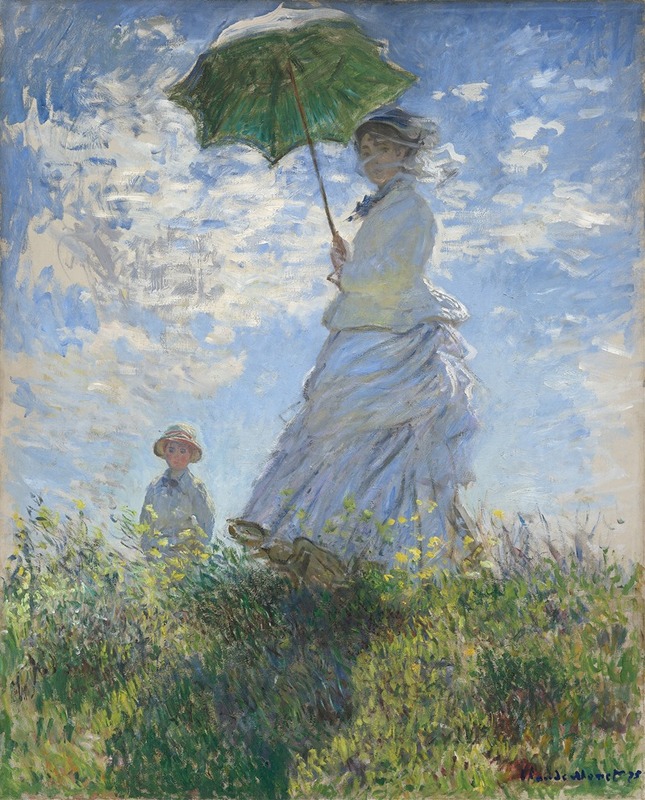
Woman with a Parasol – Madame Monet and Her Son
A hand-painted replica of Claude Monet’s masterpiece Woman with a Parasol – Madame Monet and Her Son, meticulously crafted by professional artists to capture the true essence of the original. Each piece is created with museum-quality canvas and rare mineral pigments, carefully painted by experienced artists with delicate brushstrokes and rich, layered colors to perfectly recreate the texture of the original artwork. Unlike machine-printed reproductions, this hand-painted version brings the painting to life, infused with the artist’s emotions and skill in every stroke. Whether for personal collection or home decoration, it instantly elevates the artistic atmosphere of any space.
Woman with a Parasol – Madame Monet and Her Son is an oil painting created by the French Impressionist artist Claude Monet in 1875. The work is one of Monet's most celebrated pieces and is often regarded as a quintessential example of Impressionism, showcasing the movement's emphasis on capturing light, atmosphere, and fleeting moments in time.
The painting depicts Monet's wife, Camille Doncieux, and their son, Jean Monet, during a leisurely outing in the countryside near Argenteuil, a town outside Paris where the family lived at the time. Camille is shown holding a parasol, her figure elegantly silhouetted against a bright, cloud-filled sky. Jean, positioned slightly in the background, stands on a grassy hill, gazing toward the viewer. The composition conveys a sense of spontaneity, as if the scene were captured in a single, fleeting moment.
Monet's use of color and brushwork in this painting exemplifies the Impressionist style. The artist employed loose, dynamic brushstrokes to depict the textures of the grass, the movement of the clouds, and the play of sunlight on Camille's dress. The palette is dominated by soft greens, blues, and whites, which create a harmonious and luminous effect. The parasol, a central element of the composition, casts a subtle shadow over Camille's face, adding depth and realism to the scene.
The painting was likely created en plein air, a technique favored by Monet and other Impressionists, where artists worked outdoors to capture the natural light and atmosphere of a scene. This approach allowed Monet to convey the immediacy and vibrancy of the moment, as well as the interplay of light and shadow across the landscape and figures.
Woman with a Parasol is often interpreted as a personal and intimate portrayal of Monet's family life, though the artist's primary focus was on the visual and atmospheric qualities of the scene rather than narrative or symbolic content. The painting reflects Monet's fascination with the effects of light and his ability to convey a sense of movement and ephemerality.
Today, the painting is housed in the National Gallery of Art in Washington, D.C., where it remains a highlight of the museum's collection. It continues to be celebrated for its technical mastery and its ability to evoke the beauty and transience of a moment in nature.






